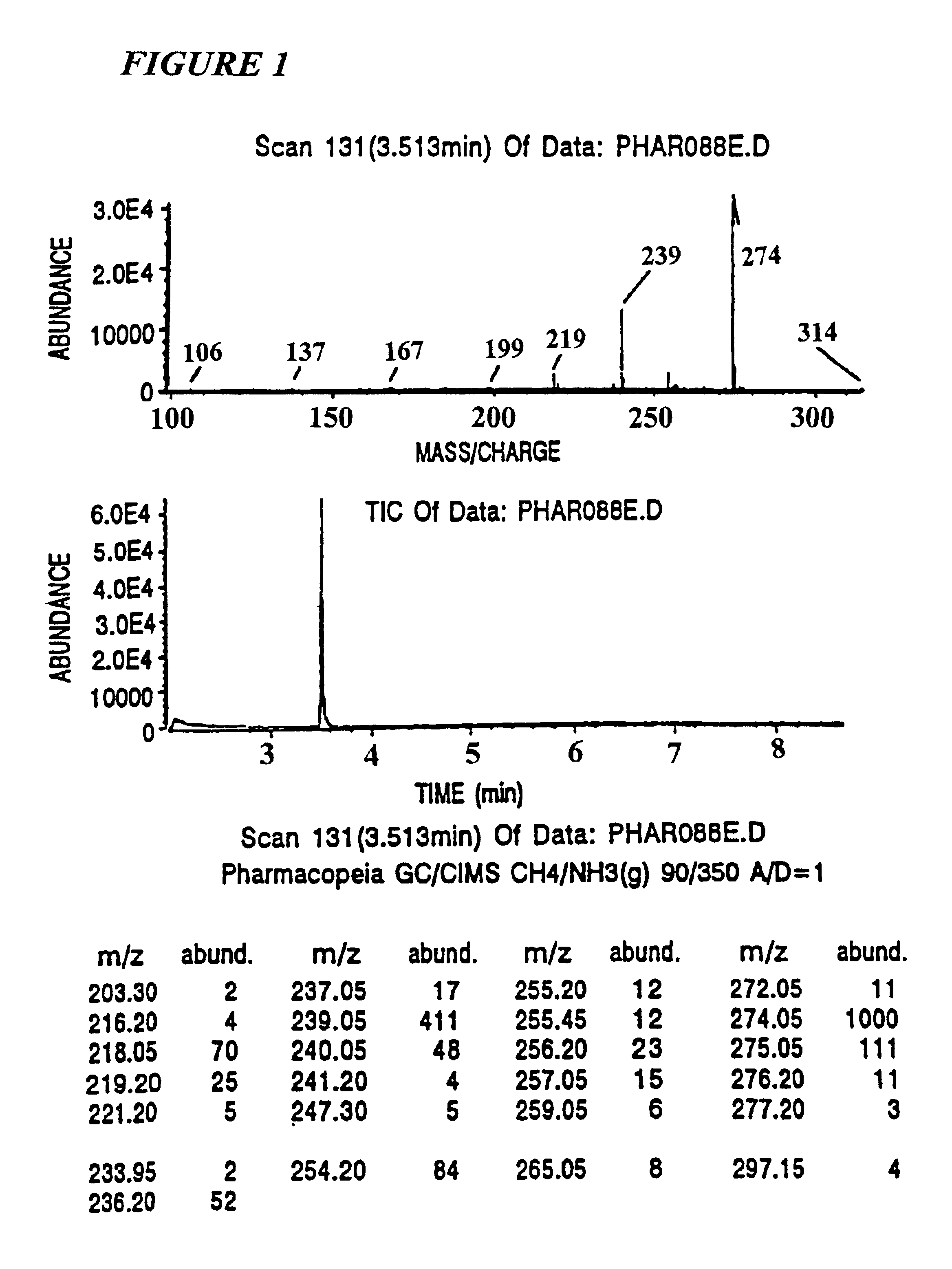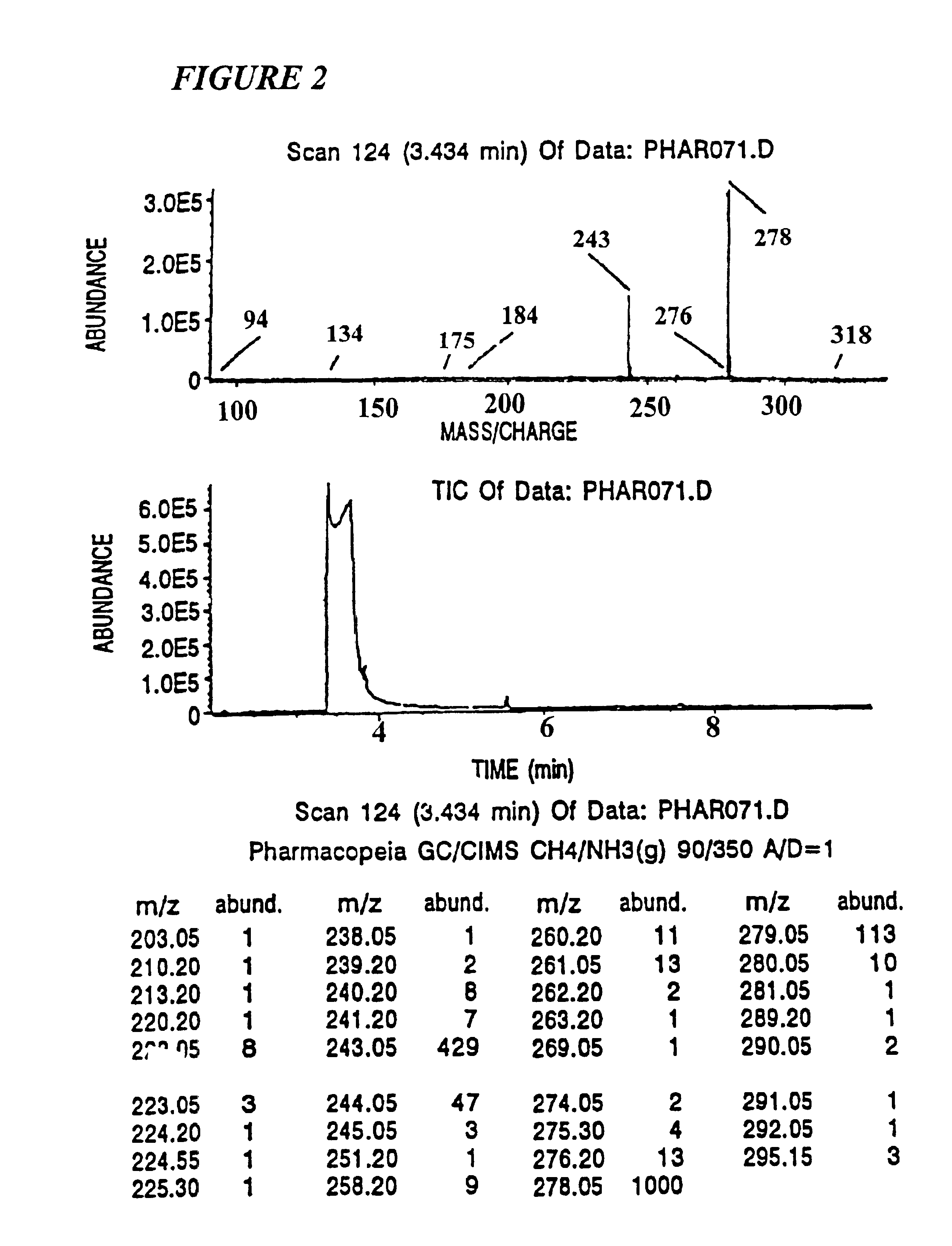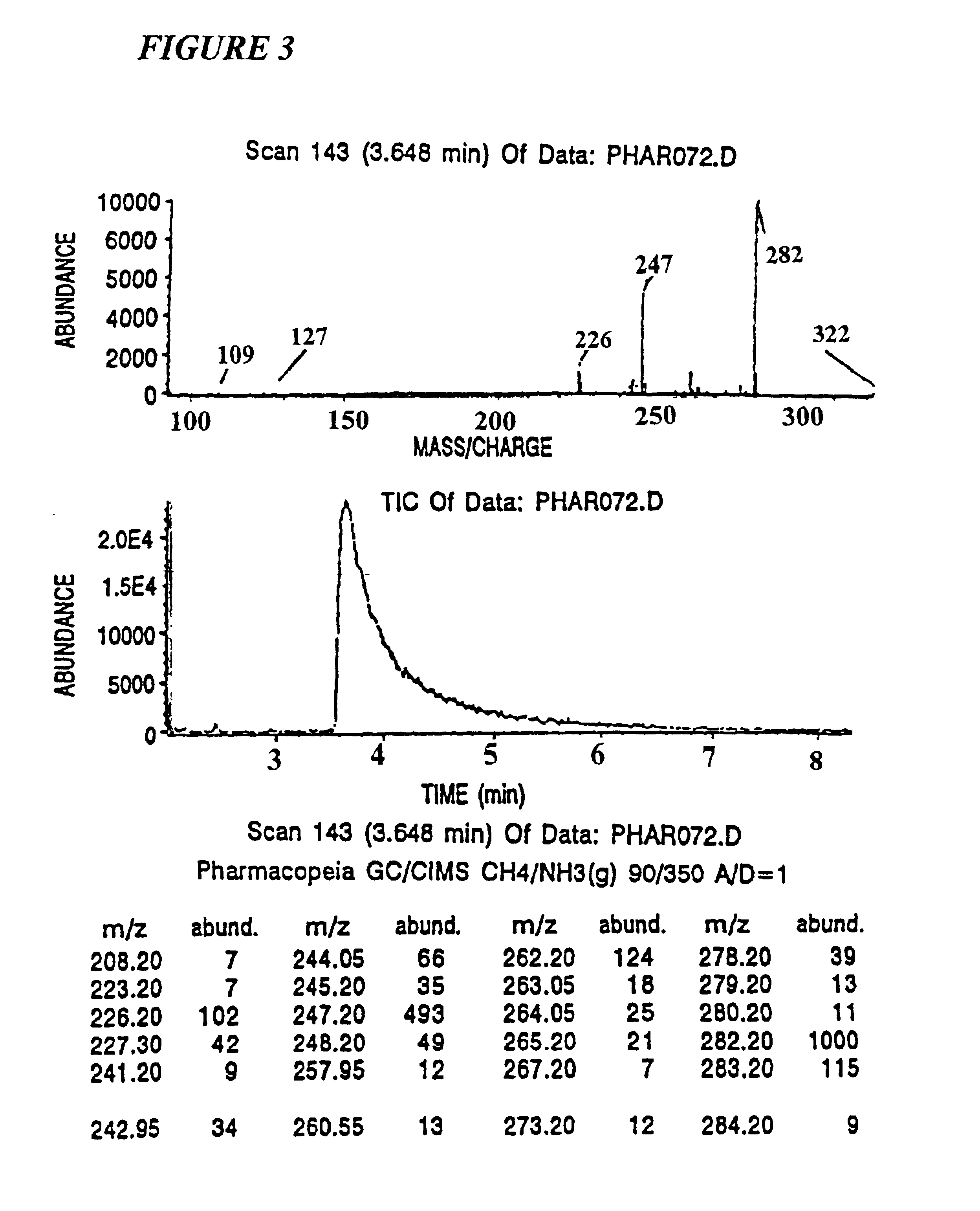Complex combinatorial chemical libraries encoded with tags
a combinatorial chemical library and complex technology, applied in biochemistry apparatus and processes, instruments, material analysis, etc., can solve the problems of individual compounds, time-consuming effort required to establish the structure of compounds once purified, and the inability to identify the chemical structure of particular compounds presen
- Summary
- Abstract
- Description
- Claims
- Application Information
AI Technical Summary
Benefits of technology
Problems solved by technology
Method used
Image
Examples
example 1
[0200]In order to encode up to 109 different syntheses, one could prepare 30 different identifiers which carry individual tags capable of being separated one from another by capillary GC. For encoding a smaller number of syntheses, fewer identifiers would be used. The tags would normally be prepared from commercially-available chemicals as evidenced by the following illustration. ω-Hydroxyalkenes-1, where the number of methylene groups would vary from 1 to 5, would be reacted with an iodoperfluoroalkane, where the number of CF2 groups would be 3, 4, 6, 8, 10, and 12. By employing a free-radical catalyst, the iodoperfluorocarbon would add to the double bond, where the iodo group could then be reduced with hydrogen and a catalyst or a tin hydride. In this manner, 30 different tags could be prepared. The chemical procedure is described by Haszeldine and Steele, J. Chem. Soc. (London), 1199 (1953); Brace, J. Fluor. Chem., 20, 313 (1982). The highly fluorinated tags can be...
example 2
Radio-labeled Tags
[0216]In the next illustration, the tags employed are monomethylethers of linear alkyl-α,ω-diols. The diol would have N+2 carbon atoms, where N designates the stage. The methyl group would be a radiolabeled reagent which would have any of a variety of 3H / 14C ratios from 1 / 1 to m / 1, where m is the number of choices. The double radiolabel allows for accurate quantitation of the tritium present in the tag. By having 10 different alkylene groups and 10 different radioactive label ratios, 1010 unique ten-member sets of tags are generated. Tags would be attached by first reacting them with activating agents, e.g. phosgene to form a chloroformate, followed by reaction with the F1—F2 component. In this case, F1—F2 is the o-nitro-p-carboxy-benzyl alcohol protected as the t-butyl ester. Each time a synthetic stage is carried out, the de-esterified identifier is added directly to the bead, which has covalently bonded amine or hydroxyl groups, to form amides or esters with the...
example 3
[0217]The identifiers employed were 2-nitro-4-carboxybenzyl, O-aryl substituted ω-hydroxyalkyl carbonate, where alkyl was of from three to 12 carbon atoms and aryl was (A) pentachlorophenyl, (B) 2,4,6-trichlorophenyl, or (C) 2,6-dichloro-4-fluorophenyl. The tags are designated as NAr, wherein N is the number of methylene groups minus two and Ar is the aryl group. Thus, tag 2A has a butylene group bonded to the pentachlorophenyl through oxygen. The subject tags can be easily detected using electron capture gas chromatography at about 100 fmol.
[0218]In the subject analysis, the tagging molecules are arranged in their GC elution order. Thus the tag which is retained the longest on the GC column is designated T1 and is associated with the least significant bit in the binary synthesis code number, the next longest retained tag is called T2 representing the next least significant binary bit, and so on. Using an 0.2 mM×20M methylsilicone capillary GC column, eighteen we...
PUM
| Property | Measurement | Unit |
|---|---|---|
| diameter | aaaaa | aaaaa |
| diameter | aaaaa | aaaaa |
| diameter | aaaaa | aaaaa |
Abstract
Description
Claims
Application Information
 Login to View More
Login to View More - R&D
- Intellectual Property
- Life Sciences
- Materials
- Tech Scout
- Unparalleled Data Quality
- Higher Quality Content
- 60% Fewer Hallucinations
Browse by: Latest US Patents, China's latest patents, Technical Efficacy Thesaurus, Application Domain, Technology Topic, Popular Technical Reports.
© 2025 PatSnap. All rights reserved.Legal|Privacy policy|Modern Slavery Act Transparency Statement|Sitemap|About US| Contact US: help@patsnap.com



